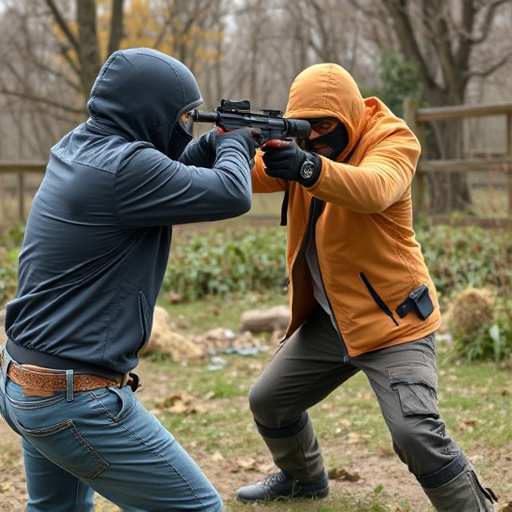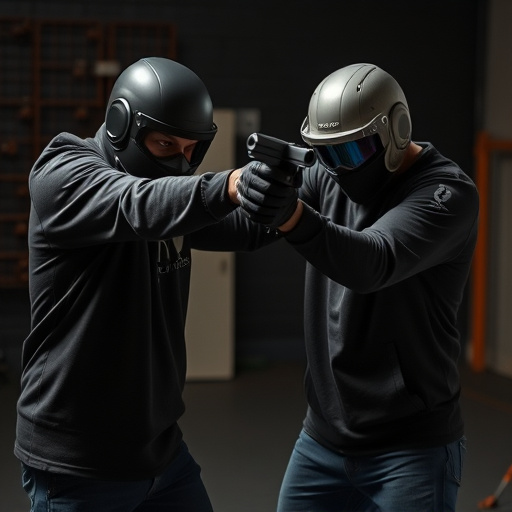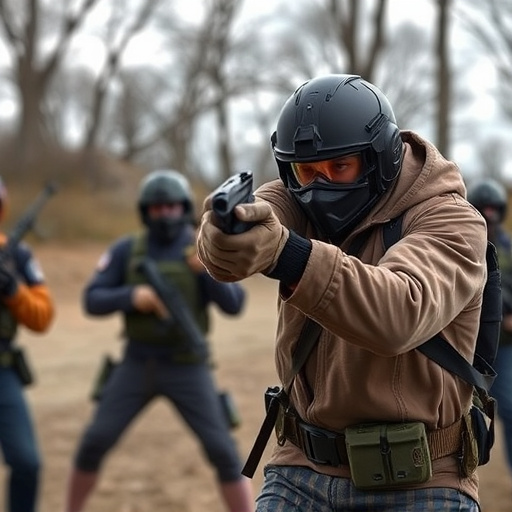Disguised stun guns, or electronic control devices (ECDs), are non-lethal self-defense tools that use high-voltage electrical impulses to temporarily paralyze assailants. Their effectiveness depends on voltage, current, target area, and muscle fiber type, with higher settings causing longer incapacitation. These compact, easily concealable devices offer a discrete way to deter threats and provide users with escape time or an opportunity to call for help, making them valuable personal defense tools when used responsibly and in accordance with local laws.
“Uncover the shocking truth behind muscle incapacitation times caused by stun guns, essential knowledge for those considering self-defense tools. This article delves into the science behind how stun guns disrupt muscular function and explores key factors lengthening or shortening paralysis durations.
We also examine the rise of disguised stun guns as popular self-defense options, weighing their effectiveness against potential risks. Discover the nuances of these powerful devices to make informed decisions regarding personal safety.”
- Understanding Muscle Incapitation: How Stun Guns Affect the Body
- Factors Influencing Duration of Muscle Paralysis from Stun Guns
- Disguised Stun Guns for Self-Defense: Effectiveness and Considerations
Understanding Muscle Incapitation: How Stun Guns Affect the Body

Stun guns, often referred to as electronic control devices (ECDs), work by disrupting muscle function through high-voltage electrical impulses. This disruption temporarily paralyses the targeted muscles, rendering the subject incapable of using their affected limbs effectively. Understanding how stun guns interact with the body is crucial for appreciating their role as disguised self-defense tools.
When deployed, stun guns send a powerful electric current through the target’s body, targeting primarily the large muscle groups in the legs and arms. This current interferes with the nerve signals that control muscle contraction, leading to involuntary spasms and weakness. The duration of muscle incapacitation varies based on factors such as the stun gun’s power output, the specific target area, and the individual’s overall health and tolerance levels. As concealed self-defense tools, stun guns offer a non-lethal means of neutralising an assailant long enough to enable escape or the arrival of help.
Factors Influencing Duration of Muscle Paralysis from Stun Guns

The duration of muscle incapacitation from stun guns can vary significantly based on several factors, making it an unpredictable aspect of self-defense tools like disguised stun guns. One of the key influences is the stun gun’s output voltage and current. Higher voltage and current generally result in longer durations of paralysis as they disrupt nerve signals more effectively. Disguised stun guns, often used for personal protection, typically have lower voltage settings to ensure their use remains legal while still providing a sufficient level of defense.
Another factor is the target area of application. Muscles closer to the stun gun’s contact points will experience paralysis first and for longer periods. This is because nerve fibers are more concentrated in these areas. The type of muscle fiber, whether fast-twich or slow-twich, also plays a role. Fast-twitch muscles, responsible for quick, powerful movements, tend to experience prolonged incapacitation due to their higher energy demands and sensitivity to nerve interruption. Understanding these variables is crucial when considering the effectiveness and limitations of disguised stun guns as self-defense tools.
Disguised Stun Guns for Self-Defense: Effectiveness and Considerations

Disguised stun guns have emerged as innovative self-defense tools, offering individuals a discrete means of protecting themselves in various situations. These compact devices can be easily concealed, making them ideal for those seeking to deter potential threats without drawing unnecessary attention. Their effectiveness lies in delivering a powerful electric shock that temporarily incapacitates the target, providing users with crucial time to escape or seek help.
When considering disguised stun guns for self-defense, several factors come into play. First and foremost, power output is essential; higher voltage ensures faster muscle relaxation and longer duration of incapacitation. Additionally, the device’s range and activation mechanism are critical considerations. Some models offer a quick-draw design, allowing users to respond swiftly during unexpected attacks. However, it’s important to note that legal implications vary, so understanding local regulations regarding stun guns is paramount before investing in one as a self-defense measure.
In conclusion, while stun guns can serve as effective disguised self-defense tools, understanding the variable duration of muscle incapacitation is crucial. Factors like the stun gun’s voltage, contact time, and individual factors like fitness level and medical conditions influence how long a target remains paralyzed. As users equip themselves with these powerful personal defense tools, staying informed about their capabilities and limitations ensures safety and efficacy in real-world situations.
